Wallenius Wilhelmsen Joins CSA 2020
The Norwegian/Swedish shipping company, Wallenius Wilhelmsen Logistics is the latest shipowner to join the Clean Shipping Alliance 2020 (CSA 2020), increasing the organisation’s membership to 35 shipowners operating a combined fleet of almost 2500 vessels.Roger Strevens, Vice President, Global Sustainability, Wallenius Wilhelmsen, pictured, said: “The implementation of the IMO 2020 0.5% global sulphur cap is supported by the company, but it does represent a significant challenge for the shipping industry, not least from an anticipated hike in fuel costs and potential availability and quality problems.“To mitigate the risk and costs associated with these challenges, Wallenius Wilhelmsen will use low sulphur fuels on the majority of its fleet and scrubbers on the rest of its vessels.
ABS Issues AIP for Jiangnan’s LNG Jumbo Carrier
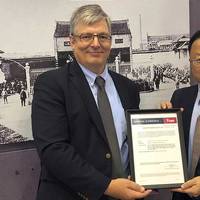
ABS has granted Approval in Principle (AIP) for the LNG Jumbo, a new 175,000 CBM liquefied natural gas (LNG) carrier design from Chinese shipbuilder Jiangnan Shipyard (Group) Co.The efficient, environmentally friendly design features the GTT MK III Flex Cargo Containment System developed in cooperation with ship designer MARIC.The LNG Jumbo design specifies a WINGD X-DF low-pressure, low-speed two-stroke dual-fuel main engine propulsion system promising enhanced propulsion efficiency and reduced fuel consumption, combined with additional energy saving devices.
MAN Notches Multiple Cruise Orders
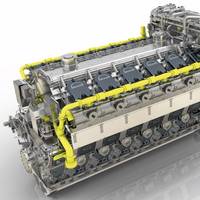
MAN Energy Solutions says its cruise business is experiencing a record order-intake. In the first eight months of 2018, the company has won orders to supply seven new cruise ships with engines plus exhaust-gas-treatment systems for scheduled delivery from the end of 2019 to 2022.The orders, which are cumulatively valued close to a three-digit million euro figure, total almost 300 MW of installed power for cruise ships ranging in size from 50,000 to approximately 140,000 gross tons…
Future Proof Ferries for the GVB
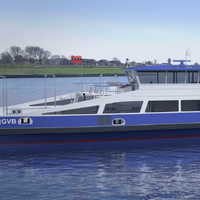
Public transport networks around the world are becoming more and more sustainable. This is due to stricter emissions regulations as well as increasing public demand for cleaner and greener modes of transport. This growing attention to sustainability is also being seen in the ferry sector, which plays a vital public transport role in many countries. In the Netherlands, the issue of sustainable ferry transport is of particular relevance because: The Dutch inland ferry sector comprises more than 300 ferry services.
C-Job Designs Amsterdam's New Ferries
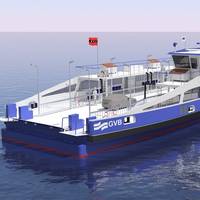
C-Job Naval Architects said it has delivered the concept design of a series of five sustainable car and passenger ferries to the City of Amsterdam. The vessels will operate 100 percent on electricity, thus providing an emission-free urban transport solution. The fully electric ferries are designed to recharge their batteries during the unloading and loading of passengers and vehicles. In order to maintain efficiency of service and a quick turnaround, this charging process will take place during a timeframe of a maximum of four minutes.
Green Shipping: Wessels Reederei Takes the Lead

International trade relies on transportation by sea, as about 85 percent of the freight volumes are shipped globally by vessels. But while maritime is widely regarded as the most environmentally benign of any transport system, maritime transport can cause a diverse environmental burden: It includes, beside the potential for damages and leaks, the inflow of waste water and, in particular, the emissions of air pollutants. Furthermore the improper cleaning of oil sludge, as well as the transfer of organisms into foreign ecosystems within ballast water.
Fishing Vessels Fit with Wärtsilä’s NOx Reducer
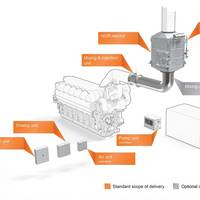
Wärtsilä said its new NOx Reducer will be fitted to two new fishing vessels under construction at the Celiktrans yard in Turkey. The ships are owned by HB Grandi, one of Iceland's largest fishing vessel operators. The company emphasizes environmental sustainability and responsible fishing practices. The order was received during the fourth quarter of 2013 and Wärtsilä's equipment is scheduled for delivery in the second and fourth quarter of 2014. The Wärtsilä NOx Reducer (NOR)…
Yara Acquires SCR Systems Provider H+H

Yara International ASA said it has strengthened its position in emissions control for ships, industrial plants and heavy-duty vehicles with its acquisition of H+H Umwelt-und-Industrietechnik GmbH, which produces Selective Catalytic Reduction (SCR) systems for secondary NOx (nitrogen oxide, nitrogen dioxide) reduction in marine and stationary land engines. Increasingly stringent environmental regulations, including in the U.S. and Europe are imposing tougher NOx reduction standards on cruise ship…
MAN Engines to Power Italian Luxury Cruise Ships
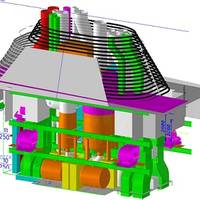
MAN Diesel & Turbo is to supply eight engines for the diesel-electric propulsion of two cruise ship newbuildings to Fincantieri Cantieri Navali Italiani S.p.A. The company is delivering the engines in cooperation with Alfa Laval who will supply accompanying exhaust-gas-treatment systems (PureSOx) for sulphur-oxide removal. Each cruise ship will be powered by two MAN 9L32/44CR and two MAN 12V32/44CR engines, providing a combined output of 23,520 kW in a diesel-electric propulsion arrangement.
Wärtsilä Secures Finance for R&D Work
Wärtsilä and Nordic Investment Bank sign a EUR 50-million loan agreement to support Wärtsilä's R&D activities. The contract for this 10-year loan was signed in Helsinki, Finland on 13 February 2013. This R&D loan supports Wärtsilä’s long-term strategy of strengthening its technology leadership position in the global marine and energy markets, and with it Wärtsilä will further develop its medium-speed engine technology in terms of efficiency, reliability and environmental performance, as well as in reducing lifecycle costs. Wärtsilä’s R&D activities continue to be given a high profile. Since 2009 Wärtsilä has increased its R&D related expenditures by more than 30 per cent.
MHI to Develop"UEC-LSGi," Low-speed, 2-stroke, Dual-fuel Marine Diesel
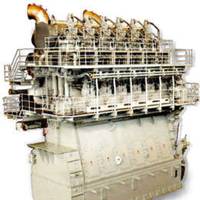
Mitsubishi Heavy Industries, Ltd. (MHI) has begun developing "UEC-LSGi," low-speed, dual-fuel, marine diesel engines capable of using not only conventional heavy oil but also natural gas for their fuel. The new engine will be added to the lineup of the Mitsubishi UEC Engine Series, the company's 2-stroke, low-speed marine diesel engine brand. Scheduled to be launched onto the market in 2015, MHI aims to reduce the economic and environmental burden on ship operators. For the new engine…
LR Publish EGTS Guide
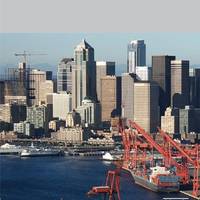
Lloyd’s Register’s has published a new guide, 'Understanding Exhaust Gas Treatment Systems', to give shipowners and operators an overview of the related technology and emerging regulations they need to make sound business decisions. The technical teams at Lloyd’s Register worked closely with industry and used project experience to develop the guidance. Exhaust gas treatment systems (EGTS), or scrubbers as they are known, are one of a number of options available to meet ever stricter emissions regulations.
GL & MAN Publish Joint Study on LNG as Fuel for Container Ships
Using liquefied natural gas (LNG) as ship fuel has recently gained more attention not only in Europe, but also in Asia and the USA. New, stringent regulations are forcing the shipping industry to rethink its fuelling options. Emissions controls, introduced by the IMO’s Marine Environment Protection Committee, combined with the introduction of emission control areas in European, U.S. and Canadian territorial waters, will have a profound impact on international shipping over the next ten years. LNG is an attractive alternative to conventional marine fuels. Can the use of LNG as marine fuel help the industry to meet these challenges? In this web-special GL looks at this potentially game changing technology…






